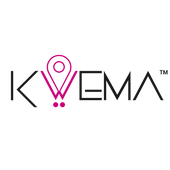In the ever-evolving landscape of workplace safety, security managers are faced with the ongoing challenge of staying abreast of the latest legislations and regulations. In 2024, the focus on healthcare and workplace violence prevention has taken center stage, prompting security managers to reevaluate and reinforce their safety protocols. Let's delve into the key legislations that demand attention and action in the coming year.

Workplace Violence Prevention for Healthcare and Social Service Workers Act (HR 1195)
This groundbreaking legislation sets the standard for the development and implementation of workplace violence prevention plans, specifically tailored for healthcare and social service settings. Security managers must proactively identify risks, devise effective solutions, and ensure comprehensive staff training. The act also emphasizes the importance of incident reporting and investigation, creating a robust framework for maintaining workplace safety.
Moreover, the act protects against retaliation for employees who report violent incidents, offering a shield for those who come forward to ensure a safer working environment. Importantly, this legislation extends coverage to the 24 states not protected by OSHA, underlining its significance in the nationwide effort to combat workplace violence.
For more information click here
Nurse Staffing Standards for Hospital Patient Safety and Quality Care Act (S 1567)
Adherence to this act is imperative for security managers operating in healthcare settings. It requires the annual development of safe staffing plans, outlining minimum RN staffing ratios. By focusing on patient safety and quality care, this legislation indirectly addresses workplace violence by reducing turnover and burnout, which can contribute to short staffing and, consequently, increased security risks.
Security managers should collaborate with nursing staff to ensure that the established ratios are maintained and regularly reviewed. The act also provides protections for nurses who voice concerns about unsafe conditions, fostering a culture of transparency and accountability in healthcare facilities.
For more information click here
Safety From Violence for Healthcare Employees Act (HR 7961)
Designed to protect healthcare employees from assault and intimidation, this act introduces essential measures to ensure workplace safety. Security managers must work hand-in-hand with law enforcement and hospital administrations to enforce appropriate punishment for offenders. Additionally, the availability of grants for violence prevention programs, training, and the acquisition of safety equipment underscores the commitment to creating a secure environment for healthcare professionals.
For more information click here

Health Care Providers Safety Act (S4268)
In response to the growing importance of physical security and cybersecurity in healthcare, security managers should familiarize themselves with this act. Authorized by the Department of Health and Human Services, it enables healthcare providers to access grants for security services and related expenses. This includes investments in cybersecurity measures, acknowledging the modern-day threats faced by healthcare institutions.
For more information click here
California Law (SB-553)
For security managers overseeing operations in California, compliance with SB-553 is non-negotiable. This law mandates that every employer with 50 or more employees must have a Workplace Violence Prevention Plan. Security managers must collaborate with their California-based counterparts to ensure that these plans are comprehensive, regularly updated, and effectively communicated throughout the organization.
As we enter 2024, security managers find themselves at the forefront of ensuring workplace safety and compliance with evolving legislations. By prioritizing the implementation of these key acts, security managers can contribute significantly to creating secure, resilient workplaces, particularly in healthcare settings where the focus on violence prevention is crucial. Staying informed and proactive will be the cornerstone of success in navigating the intricate landscape of safety legislations in the coming year.
For more information here
